MTA Unveils Seven East-West Transit Options for Baltimore; Public Input Sought
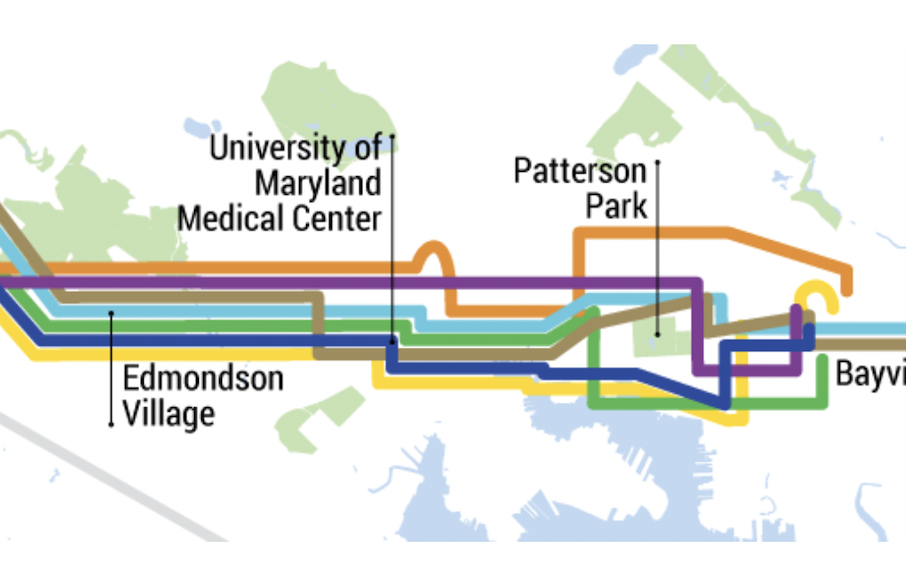
When Gov. Lawrence J. Hogan Jr. pulled the plug on the Red Line in 2015, he slammed the long-planned Baltimore project, calling it a “wasteful boondoggle.” The nearly $1 billion in federal funding that Maryland had secured to build the rail line was returned to the U.S. Treasury for use elsewhere.
Seven years later, the Maryland Transit Administration has unveiled a new set of transit options that would serve the Baltimore region in similar ways. The agency hopes the public will study the options and offer comments.
Transit advocates said the new study will offer the state’s new governor and legislature a fresh start. They say the lack of reliable mass transit is holding the region back economically.
The seven alternatives vary in length, cost, time for construction, the communities served, the number of stops they would make, and how many car trips they would supplant.
In an interview, MTA Administrator Holly Arnold called the release of the feasibility study “a pretty major step” in advancing the state’s Central Maryland Regional Transit Plan. While no single line can serve everyone, she acknowledged, a well-planned rail system can help people get where they need to go.
“The feedback we’re looking for is: What makes the most sense and what serves the most amount of people,” Arnold said. “Bang for the buck is an important piece of that.”
Five of the seven options would be entirely or partially “bus rapid transit,” or BRT, systems, using lighter vehicles that are smaller and less expensive. BRT systems can share the road with cars and trucks or run in lanes dedicated solely for transit.
Two of the proposals utilize light rail cars, which are powered by overhead wires. They can operate in a fixed guideway or run in mixed traffic. One of the proposals would see the construction of a heavy-rail system powered by a third rail. Heavy rail runs in a fixed guideway typically underground.
All seven would run east-west through the city, hitting major job centers. In a statement, MTA said it envisions providing service 20-24 hours a day, with a train or BRT coming every 10-15 minutes.
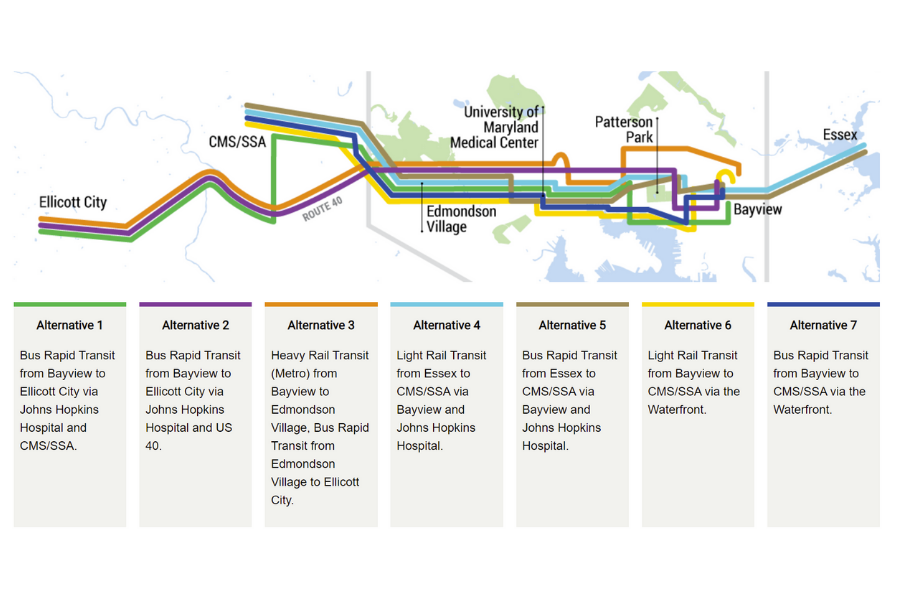
MTA screenshot.
The seven alternatives announced for public comment are as follows:
- Alternative 1: Bus rapid transit from Bayview to Ellicott City via Johns Hopkins Hospital and the Centers for Medicare and Medicaid Services and the Social Security Administration
- Alternative 2: BRT from Bayview to Ellicott City via Johns Hopkins Hospital and U.S. 40.
- Alternative 3: Heavy rail transit (Metro) from Bayview to Edmondson Village, and BRT from Edmondson Village to Ellicott City
- Alternative 4: Light rail from Essex to the Centers for Medicare and Medicaid Services and the Social Security Administration via Bayview and Johns Hopkins Hospital
- Alternative 5: Bus rapid transit from Essex to the Centers for Medicare and Medicaid Services and the Social Security Administration via Bayview and Johns Hopkins Hospital
- Alternative 6: Light Rail Transit from Bayview to the Centers for Medicare and Medicaid Services and the Social Security Administration along the Harbor waterfront
- Alternative 7: BRT from Bayview to the Centers for Medicare and Medicaid Services and the Social Security Administration along the Harbor waterfront
Del. Robbyn Lewis (D-Baltimore), who was harshly critical of Hogan’s decision to kill the Red Line, praised the release of new east-west proposals.
“It’s wonderful to have so many options on the table,” she said. “What the people of Maryland need more than anything else is options for moving around without being dependent on cars.”
Alternative 6 most closely resembles the original Red Line, said Brian O’Malley, head of the Central Maryland Transportation Alliance. He called the feasibility study a step toward the “larger, more capital-intensive improvements” that the region needs.
“If the next Governor wants to pursue it, this makes the MTA more ready for a project that would move more people more rapidly than local buses can,” O’Malley added.
The seven alternatives differ dramatically in three key areas — cost, construction time, and “equity,” the extent to which under-served populations would benefit. Four of the proposals would cost around $1 billion and take between five and eight years to build. Other proposals would cost in the $3 billion to $4 billion range and take seven to 12 years to build, MTA estimates. (The Purple Line, which is being built in Prince George’s and Montgomery counties, is billions over budget and years behind schedule, making preliminary cost and construction estimates somewhat unreliable.)
The public can study the alternatives and submit comments between now and Aug. 1. Comments can be submitted online or at one of two virtual public hearings being held this summer. MTA will also hold “pop-up” events at festivals and other events that draw a crowd.
“We want public feedback on these,” Arnold said. “Our analysis and the numbers are great, but sometimes hearing directly from the people who are going to be impacted has a big benefit and will make the project that much stronger.” She said MTA is particularly interested in getting feedback from students and other young people. The agency is also preparing Spanish-language materials.
In the fall, the state will release a set of north-south corridor transit options to improve mobility in the Baltimore region.
“We’re looking at the entire network and how we can strengthen the system,” said Arnold, “to make it frequent, make it reliable and make it easy.”

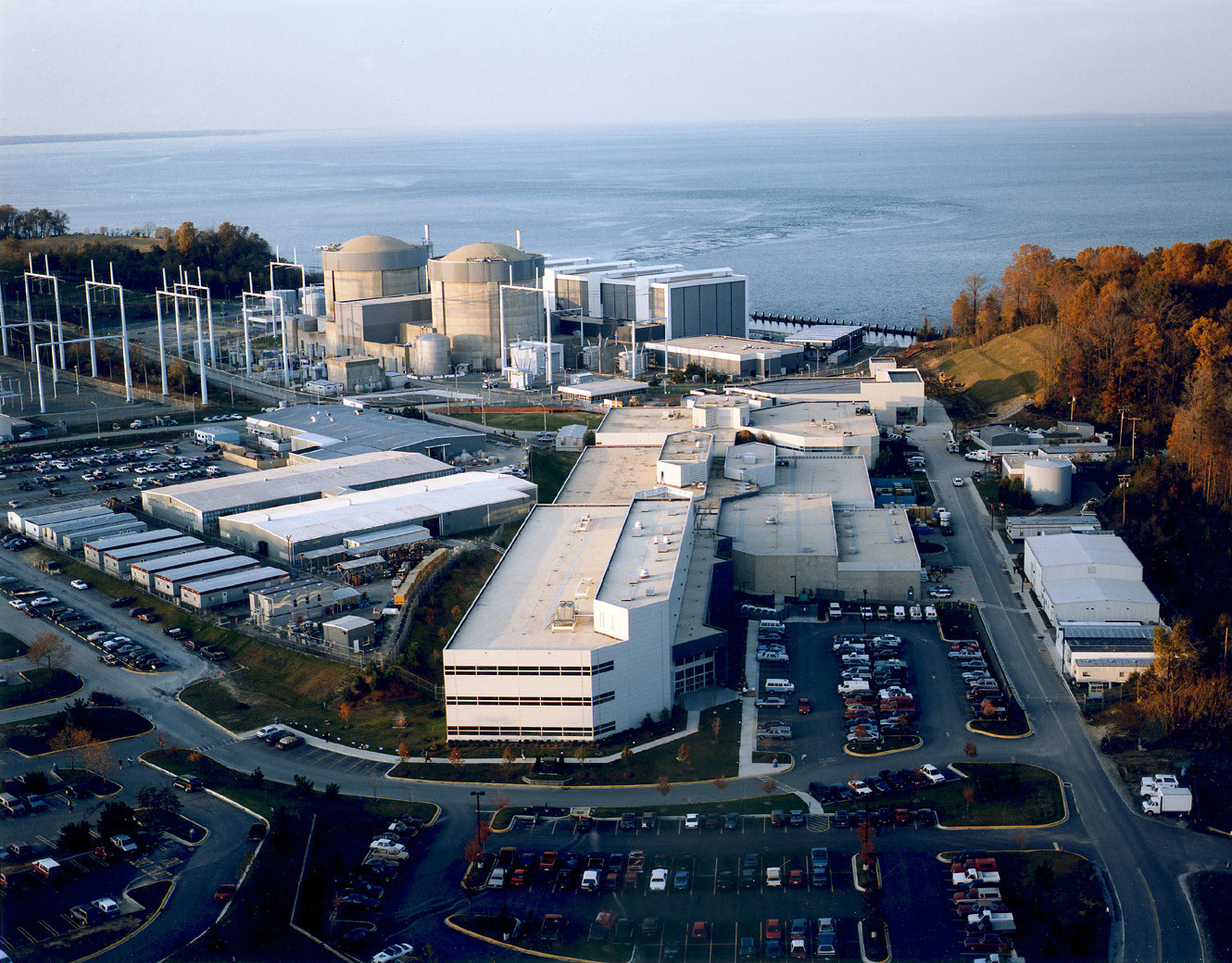
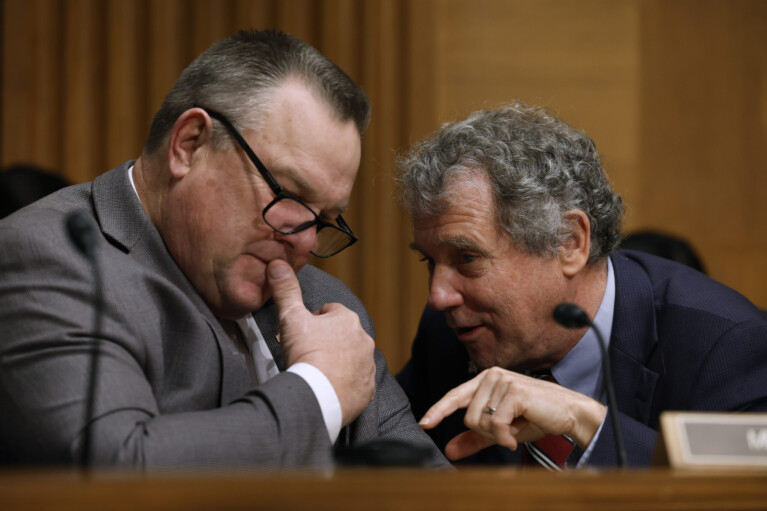
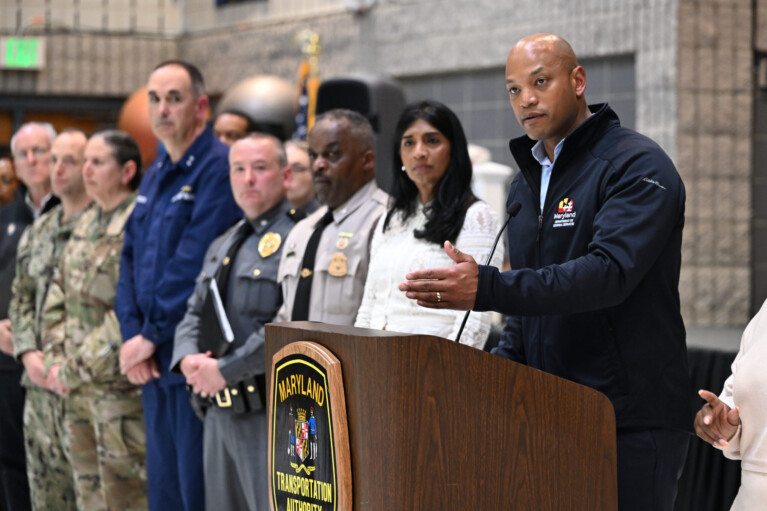
 Creative Commons Attribution
Creative Commons Attribution